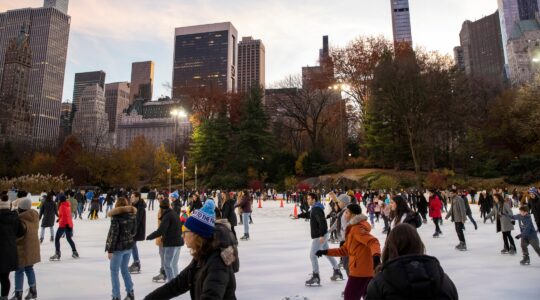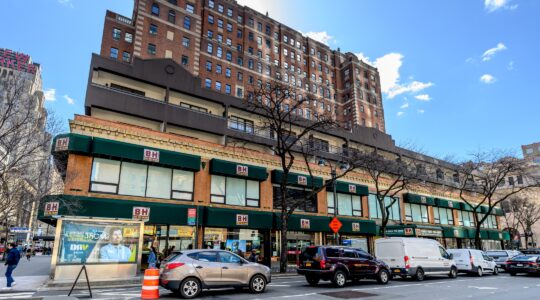Few of us welcome snow in New York, where it perhaps looks picturesque for a half-hour in the park — but then mostly just snarls up commutes, collects in dirty piles on the corner and fouls up sidewalks with slush.
In a city like Bansko, however, snow is always welcome. Bansko, a resort city of not quite 10,000 people in the Pirin mountains of southern Bulgaria, has evolved from the favored weekend destination of Sofia skiers to international winter-sports destination.
It may not be Gstaad or Aspen just yet, but Bansko’s very lack of cosmopolitanism is an asset: visitors get a first-world infrastructure and fellow travelers from diverse countries, yet they pay a fraction of Switzerland prices. And despite its growth, Bansko still retains the rustic feel of an Old World village.
Bansko is flooded with visitors this month as it plays host to the prestigious Audi FIS Ski World Cup, an event that draws the world’s best skiers and marks a kind of coming-out for the Balkan resort. Bansko lies at the heart of historical Macedonia — a region of snow-capped mountains and dramatic valleys that encompasses southwestern Bulgaria, Northern Greece and the former Yugoslav Republic of the same name.
A two-hour drive south from Sofia, the Bulgarian capital, Bansko is also an excellent side trip from Greece’s second city, Thessaloniki; both cities are home to significant Jewish communities, heritage sites and (not least) major airports. Either way, the approach to Bansko — through a stunning landscape of jagged mountains and deep, forested gorges — is an unforgettable part of the journey.
Many a Bulgarian resort has fallen victim to the post-Communist plague of aesthetically dissonant architecture — ghastly approximations of Disney castles, Tuscan villas or Manhattanesque glass-box towers. Bansko has somehow been spared this fate; tasteful, wood-beam chalets in the Swiss style have sprouted up in the new section of town. British skiers snap them up for a cheap winter getaway, booking charter flights and flooding the towns with English chatter on snowy weekends.
All of which makes Bansko an appealing destination for snow-loving Americans. As I write this, the slopes at Bansko have two feet of powder at the base and nearly eight feet at the summit, with daily temperatures above freezing down in the town. (Despite its image, Bulgaria is not really all that cold.) Surrounded by mountains, far from the sea, Bansko is sunny, dry and windless; the lack of humidity or wind chill makes it a comfortable environment for hours of daytime strolling, even on very cold days.
And even for the non-skiers among us — count me as one of them — Bansko, ringed with thermal mineral baths, is a delightful place to while away a cozy weekend. The winding lanes of its historic core are dotted with tiny mehanas, Bulgarian taverns decorated in the traditional style, with wood-beam ceilings, bright-red tablecloths, and menus heavy on traditional fare. In mehanas, parties occupy tables for many hours on end; they might sit for coffee, progress to liquors or beers, and end up nibbling away at platters of fried potatoes, tomato-and-cucumber salads, grilled feta and kebabs.
Nowadays, there are plenty of British pubs serving up cheese on toast to the ski-weekend crowd. The last time I was in Bansko, I sat next to a large table of English skiers, and the subject turned to indoor heating standards — which are higher in rural Bulgaria, oddly, than in much of Western Europe. (Wi-Fi, too: I am always amazed by how much faster my Internet connections are across Eastern Europe than in the far richer countries nearby.)
But nobody comes to Bansko to stay indoors. Everyone in town seemed to be headed to or from the slopes, clutching gear or negotiating taxis to the lifts. I strolled down Pirin Street, a lively route lined with souvenir shops and cold-weather gear that cuts through the new part of town, wondering if there was any practical way to lug back hand-painted pottery (there wasn’t). There are even a couple of art galleries along this street, showing everything from religious icons to abstract paintings.
Back in the Old Town, icicles hung from the red-tile roofs of the old stone buildings; I passed snowy courtyards and frozen wells from a time before plumbing. Out on the central ploshtad (town square), a larger-than-life Communist hero loomed from his bronze pedestal, one of the political statues so common in this part of the world. Skiers have plied the nearby slopes for generations — but the statue was a reminder of how recently this mountain region has opened up to the world, inviting a new generation to enjoy the Southern Balkans.
The New York Jewish Week brings you the stories behind the headlines, keeping you connected to Jewish life in New York. Help sustain the reporting you trust by donating today.




